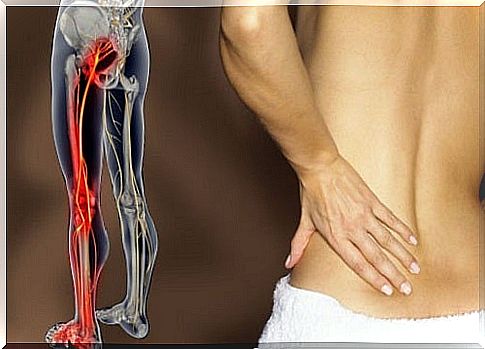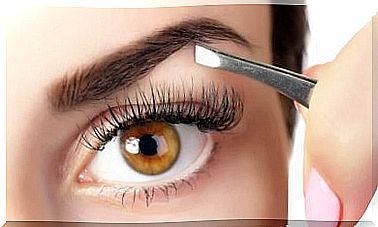Sciatica And Lumbago: How To Treat Them?
There is a psychological theory that indicates that these pains are due to unresolved emotional issues which result in somatization.

Lumbago and sciatica are two very similar conditions that cause pain and make certain movements in the back impossible.
More and more patients are suffering from these problems. Indeed, they exert too much effort or remain seated for too long, without moving.
Find out in this article what sciatica and lumbago are and how you can treat them.
Sciatica: what should you know?
Irritation of the sciatic nerve, better known as the “sciatic nerve” causes pain in the lower back. This pain thus extends to the back of the legs and to the tips of the feet.
It is one of the most frequent consultations among adults, especially among middle-aged people. Indeed, they have very sedentary jobs (in front of a desk). The pain can last for days, weeks and up to years, and prevents certain movements from being made.
Sciatica occurs when the sciatic nerve is compressed due to movement. When you lift too much weight or simply because you leave your back in the same position for hours on a daily basis.
The roots of this nerves start at the level of the spinal cord and emerge through the vertebrae. They descend along the buttocks and to the outer edge of the foot.
Some of the most common causes of sciatica are:
- Spinal disc herniation.
- Spinal stenosis.
- Piriformis syndrome.
- Fractures.
- Tumors.
- Paget’s disease.
- Pregnancy.
The symptoms of this pain are:
- Pain that varies in intensity with movement.
- Inability to move easily, for example, when getting out of bed, tying shoelaces, or lifting something off the floor.
- Changes in the sensitivity of the skin.
- Muscle fragility.
- Lack of reflexes.
- Limping while walking.
Lumbago: what do you need to know?
Most people have had low back pain (also called “lumbago”) at least once in their life. It is a pain in the area of the back, more precisely the place where the ribs end up to the buttocks.
It is the leading cause of disability and people with it are usually between 20 and 45 years old.
The spine is made up of different bones (the vertebrae) that separate the discs of cartilage that help to absorb shocks or movements. Thus, the vertebrae are covered with a thin layer of cartilage. They stay in their place thanks to muscles and ligaments.
The lumbar part is the lower area of the back and consists of five vertebrae that connect the thorax with the pelvis and the legs. This part allows us to turn, to move, to lower ourselves, to incline ourselves. It also gives us strength to stand up, to walk, to run and to stand.
When you have low back pain, you feel pain when you do any of these activities.
Different types of lumbago
There are two types of low back pain: specific and non-specific. In the first, we know the causes of its appearance, something that happens in 20% of cases.
Some of the reasons this problem occurs are osteoarthritis (degenerative arthritis), osteoporosis, herniated disc, and spinal stenosis.
In cases of non-specific low back pain, 80% of other patients do not know the origin of the pain. The most common factors that trigger it are heavy lifting, stress, repeated incorrect postures and psychological factors, among others.
Another classification for low back pain is based on the length of time the pain persists : acute (less than 7 days), sub-acute (between 7 days and 7 weeks) and chronic (more than weeks).

How can sciatica and lumbago be treated?
According to traditional Chinese medicine, sciatica and low back pain problems also affect the kidneys and bladder and are attributed to excessive consumption of meats, pungent foods, and alcohol, among others.
There is a psychological theory that says it is somatization due to unresolved emotional issues like, for example, unemployment, abandonment, divorce, poverty, etc.
But knowing the causes of back and leg pain isn’t everything. It is also very helpful to know the solutions. Thus, the most effective and natural treatments are as follows:
Do massages
Put almond oil or hypericum essential oil in a container, mix with rosemary oil and arnica extract, all in the same proportions.
Massage from the soles of the feet and work your way up to the lower back. Thus, the back warms up and relaxes. For this technique to be even more effective, it is advisable to continue massaging all over the body, especially on the shoulder blades, shoulders and back of the neck.
Do therapy
In the event that the pain is produced by an emotional or psychological problem, it is a good idea to consult a therapist. This will relieve pain, since the patient will feel relieved to talk about their problems, traumas and fears.
Do exercises

Certain types of movements or disciplines, such as yoga, tai chi, swimming, pilates, and water aerobics can help improve symptoms.
It is always good to exercise until the body starts to “complain”, without straining too much. Don’t forget the warm-up at the start and the stretching at the end.
Be on the move
It is not advisable to rest too much or stay in one position for many hours at a time. At work, get up every hour and take a short “walk”, for example.
Apply heat
A good way is to put a hot hot water bottle on the painful area for half an hour, while we are watching TV, reading, or chatting with someone.









